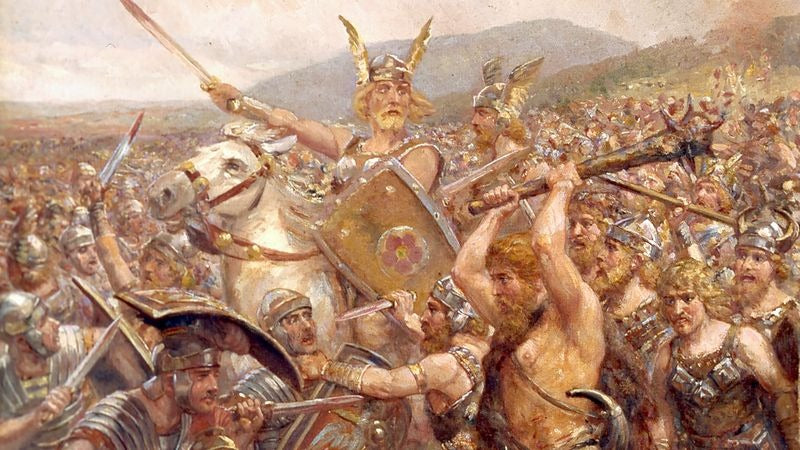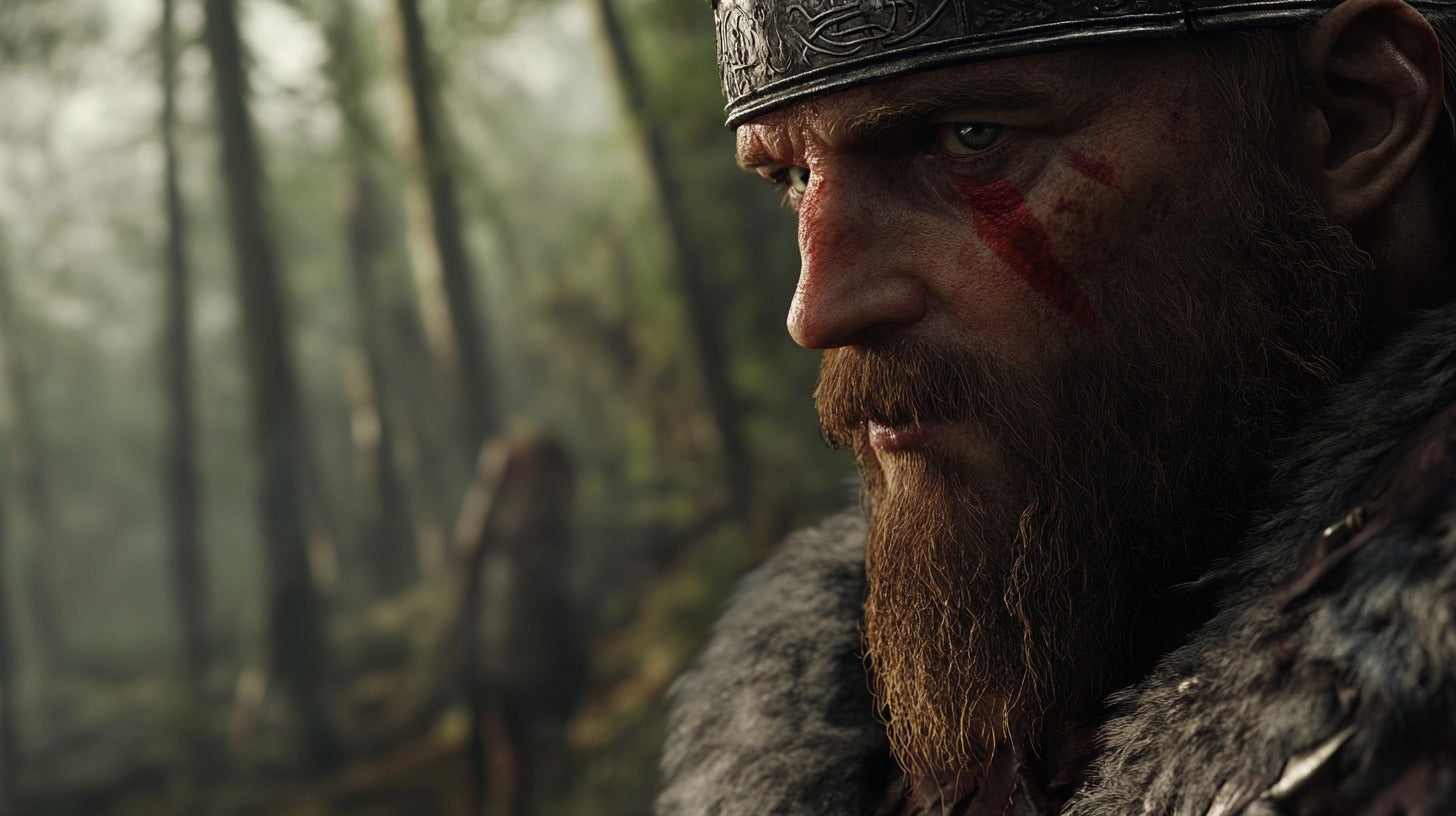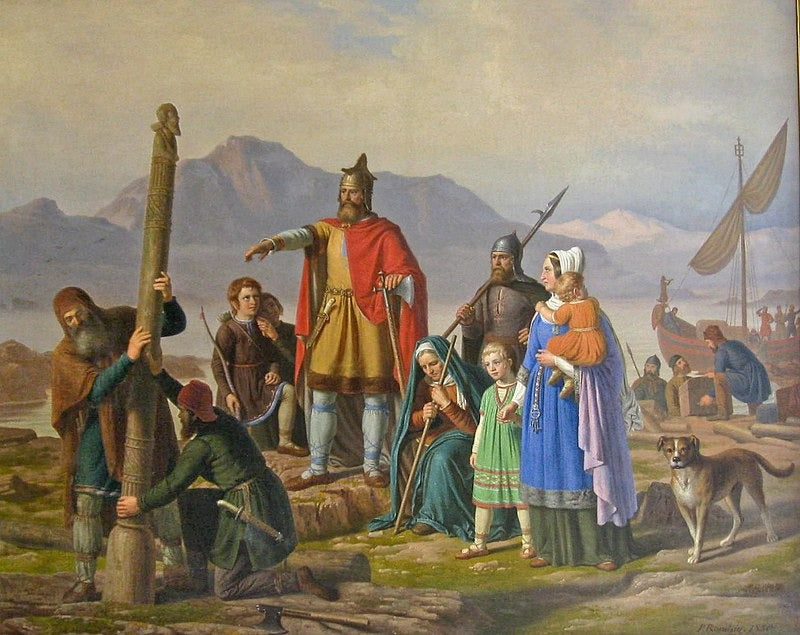
The Battle of Teutoburg Forest: Rome's Greatest Defeat
The Battle of Teutoburg Forest (AD 9) was a catastrophic defeat for the Roman Empire, halting its expansion into Germania and solidifying the Rhine as Rome's frontier. Led by Arminius, a Germanic chieftain who betrayed his Roman allies, tribal warriors annihilated three Roman legions under the command of Publius Quinctilius Varus. The battle, often described as Rome’s greatest military disaster, reshaped the empire’s borders and influenced European history for centuries.
Historical Context

Map showing the defeat of Publius Quinctilius Varus at Kalkriese (Illustration: Skaalr CC BY-SA 4.0).
During the reign of Emperor Augustus, Rome sought to expand its territories beyond the Rhine River into Germania. This effort aimed to secure resources and bring the region under Roman control. Germania was, however, a patchwork of tribal societies, fiercely independent and resistant to foreign domination. Despite their internal rivalries, these tribes shared a strong animosity toward Rome's imperial ambitions.
Publius Quinctilius Varus, a seasoned Roman general, was tasked with consolidating Roman authority in the region. Meanwhile, Arminius, a Cherusci noble raised in Roman society and trained as an auxiliary commander, secretly plotted to unite the Germanic tribes against Rome.
Key Figures
Varus, loyal to Augustus, epitomized the Roman belief in their military superiority and administrative prowess. Arminius, on the other hand, symbolized resistance against imperial oppression. Using his intimate knowledge of Roman tactics and strategies, Arminius became a pivotal figure in orchestrating one of history's most devastating ambushes.
The Course of the Battle

Reconstruction of the improvised fortifications built by the Germanic coalition for the decisive phase of the Battle of the Teutoburg Forest near Kalkriese. (Photo: Markus Schweiß CC BY-SA 3.0).
In September AD 9, Varus led his legions—approximately 20,000 soldiers—through the dense forests of northern Germania, unaware of the looming danger. Arminius, feigning loyalty, convinced Varus to take a detour to suppress a minor uprising. This maneuver led the Romans into an ambush strategically planned to exploit the forest's narrow, muddy paths.
Over three days, the Roman forces were decimated. Hemmed in by thick woods and under constant attack from concealed warriors, the legions' discipline crumbled. Supplies were lost, formations disintegrated, and morale plummeted. Varus ultimately took his own life to avoid capture, while few survivors managed to escape.
Tactics and Strategies
The Roman legions, renowned for their open-field discipline and engineering prowess, were ill-suited for guerrilla warfare in hostile terrain. In contrast, the Germanic tribes used the dense forest to their advantage, launching hit-and-run attacks that disrupted Roman cohesion. Arminius exploited his deep understanding of Roman strategies, choosing terrain and timing that neutralized their strengths.
Aftermath and Legacy

The Roman ceremonial face mask found at Kalkriese is linked to the Battle of the Teutoburg Forest (9 CE), where Germanic tribes led by Arminius crushed Roman forces. Likely part of a cavalryman's parade armor, it highlights the battle's significance. (Photo: Carole Raddato CC BY-SA 2.0)
The defeat stunned Rome. Emperor Augustus reportedly lamented, "Varus, give me back my legions!" The battle marked the end of Roman attempts to annex Germania east of the Rhine, solidifying the river as the empire's northern boundary. While Rome retaliated under generals like Germanicus, the Germanic tribes retained their independence.
The long-term consequences were profound. By halting Roman expansion, the battle preserved the cultural and political autonomy of Germania, indirectly shaping the development of medieval Europe. It also highlighted the vulnerabilities of even the mightiest empires when faced with asymmetrical warfare.
Centuries later, the Battle of Teutoburg Forest has become a symbol of resistance against oppression. Archaeological discoveries at sites like Kalkriese have shed light on the battle's specifics, while debates continue regarding Arminius’s motivations and the scale of the conflict. The story has also inspired countless cultural representations, from medieval sagas to modern films and literature.
The Battle of Teutoburg Forest stands as a testament to the limits of empire and the enduring power of resistance. Through cunning leadership and local knowledge, a coalition of tribes managed to halt the mightiest military force of the ancient world. Its legacy continues to echo in the annals of history, reminding us of the resilience of those who fight for their freedom.
Frequently Asked Questions (FAQs)
- What caused the Battle of Teutoburg Forest?
The battle was triggered by a Germanic coalition led by Arminius, who betrayed the Romans to resist their expansion into Germania.
- How many Roman soldiers died in the battle?
Approximately 20,000 Roman soldiers were killed, comprising three legions, auxiliary troops, and non-combatants.
- Where did the Battle of Teutoburg Forest take place?
The exact location remains debated, but most scholars identify Kalkriese in modern-day Germany as a likely site.
- What happened to Arminius after the battle?
Arminius continued to lead resistance against Rome but was eventually assassinated by his own people in AD 21.
- What was the significance of the battle for Rome?
The battle ended Roman expansion into Germania, defining the Rhine River as the empire's northern frontier.
References
Wells, Peter S. The Battle That Stopped Rome.
Murdoch, Adrian. Rome's Greatest Defeat: Massacre in the Teutoburg Forest.
Tacitus. Annals (Primary source detailing Roman perspectives).
Goldsworthy, Adrian. In the Name of Rome: The Men Who Won the Roman Empire.








